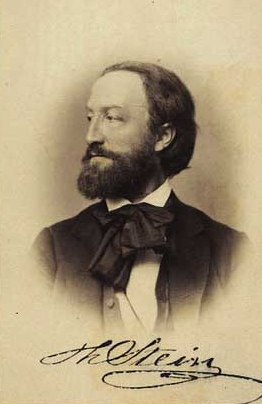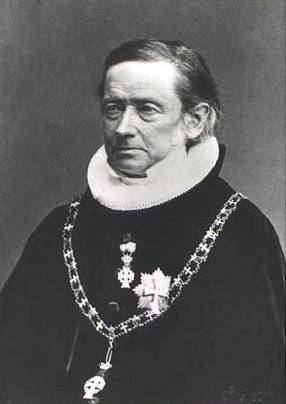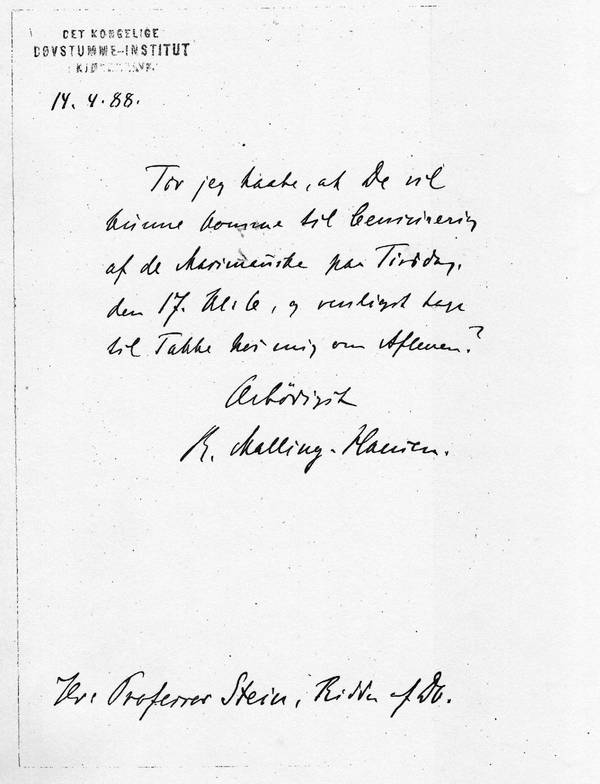1888.04.14 English
THE ROYAL INSTITUTE
FOR THE DEAF-MUTE
COPENHAGEN
14.4.88
Dear Sir, may I hope that you will attend the judgement of the Marimans[1] this coming Tuesday the 17th at 6.00 PM and kindly be content with dinner at my place in the evening?
Respectfully
R. Malling-Hansen
Professor Stein, knight of the Order of the Dannebrog[2]
[1] CB: I read it as ‘Marimanske’, but I havn’t been able to find out what it is. However, professor Stein is – see the next footnote – a famous sculptor.
SA: Attached to this letter is an account apparently showing the expenses for making a portrait bust. The account is marked by the name of ‘Martensen’ – a bishop who died in 1884. It seems that Malling-Hansen was one of the originators of the project to have Theobald Stein create a portrait bust of Hans Lassen Martensen. I also don’t know what ‘Marimanske’ is supposed to mean, but possibly it could be something to do with stone samples. The word has a certain resemblance to the Latin word for marble – ‘marmor’ (JMC: and also to ancient Greek: ‘mármaros´; as well as ‘Mariamman’, the South Indian mother goddess, related to fertility and rain)
[2] CB: Stein has been awarded the highly prestigious medal of the order of the Dannebrog. Stein was a very well-known and highly esteemed personality at the time; Theobald Stein 1829 – 1901, sculptor, studied under the famous Danish sculptor Hermann Wilhelm Bissen (1798-1868), among others. His main works are: the Holberg statue in front of the Royal Theatre and the Niels Juel statue at ‘Holmens Kanal’. He created numerous portrait busts and medallions of prominent persons, such as bishop Mynster and Bishop Martensen of the Copenhagen Cathedral – and much more. Professor of the Royal Danish Academy of Fine Arts in 1883 and Director at this institution 1893-96.




